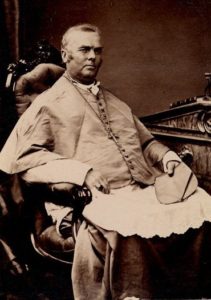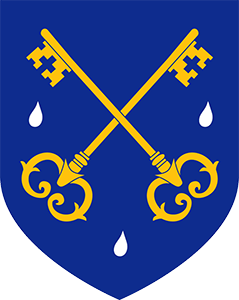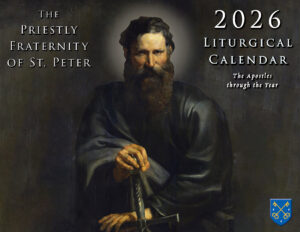Salvation History…on a Stick

In the Year of Our Lord 1838, Fathers François Blanchet and Modeste Demers traveled to Fort Vancouver at the behest of the bishop of Quebec. The mission entrusted to these two priests was simple on its face, but it was also impossibly vast in its scope. They were tasked to spread the message of the Gospel throughout the Pacific Northwest, in a region that stretched from California to Alaska.
The Fathers, clearly, would need help. They managed to get a few literate men to serve as catechists for the white settlers, but this approach would not serve so well with the native tribes of the area. Each tribe had its own language, and though some were closely related, others were so different from the rest that they would have to be learned from scratch. The Chinook Jargon, which served as a sort of general inter-tribal means of communication throughout the Northwest Coast, was only a simplified pidgin language useful primarily for trading scenarios, not for teaching theology.
But the missionaries began to observe how the interpreters they relied on very naturally used the native love for rhetoric and oratory to give “a new force and new weight” to Catholic doctrine—in languages that white men could only stammer in.

Blanchet and Demers thus determined that those best suited to catechize the Indians were Indians themselves. But how to transform a mere interpreter into a trained catechist, capable not only of understanding but also teaching the vagaries of doctrine?
The answer came from an old tradition ingrained in native Northwestern culture itself. Catholic teaching would be encoded the way Indians had from time immemorial recorded the history of their families and tribes: on a totem.
 “In looking for a plan,” Blanchet writes, “[I] imagined that by representing on a square stick, the forty centuries before Christ by 40 marks; the 33 years of our Lord by 33 points, followed by a cross: and the 18 centuries and 39 years since by 18 marks and 39 points, would pretty well answer [my] purpose, in giving [me] a chance to show the beginning of the world, the creation, the fall of the angels, of Adam; the promise of a Savior, the time of His birth, and His death upon the cross, as well as the mission of the apostles.”
“In looking for a plan,” Blanchet writes, “[I] imagined that by representing on a square stick, the forty centuries before Christ by 40 marks; the 33 years of our Lord by 33 points, followed by a cross: and the 18 centuries and 39 years since by 18 marks and 39 points, would pretty well answer [my] purpose, in giving [me] a chance to show the beginning of the world, the creation, the fall of the angels, of Adam; the promise of a Savior, the time of His birth, and His death upon the cross, as well as the mission of the apostles.”
This miniature Catholic totem pole was called the “Sahale” stick, from the name for God in Chinook.
Abandoning theological abstraction for a straightforward historical narrative proved a masterful stroke of evangelization. Like a tribal or familial totem, the Sahale stick was a symbolic retelling of salvation history in visual terms the natives of the Northwest could readily understand.
All that remained was to put it to the test.
Blanchet had a Sahale stick carved for Tslalakum, a visiting chief of the Straits Salish. After a mere eight days of instruction Tsalakum had mastered the concepts engraved on it, and he brought it back to his native land. As word spread to other tribes, Blanchet made and gave away eight more at Nisqually in 1839.
Hand-carving the four-foot sticks, however, quickly proved too laborious for the burgeoning demand. So Blanchet and Demers switched to drawing the Sahale stick’s symbols on paper and calling these pictures “Catholic ladders.”
Then, almost a year after giving the first stick to Tslalakum, Blanchet was finally able to visit his tribal home on Whidbey Island, hoping to follow up on the chief’s visit with some basic catechesis.
Amazingly, he found a tribe already well familiar with the tenets of Christianity. Chief Tslalakum’s eight days of instruction had produced an entire tribe that not only knew the main points of the faith, but had also managed to learn some hymns as well. Tslalakum had given his first Sahale stick to another chief and made a copy for himself. And other chiefs like Witskalatche, Netlam and Sehalapan had similar resounding successes in lands where no priest had ever stepped foot.
The Sahale stick, by successfully “baptizing” an ancient native practice of the Northwest Coast, had proved both a wonderfully ingenious way to teach the faith to the Indians. And almost 200 years later, the tradition of making Sahale Sticks and Catholic Ladders still continues to this day, as part of cultural patrimony of Catholicism in the region.
June 12, 2020








